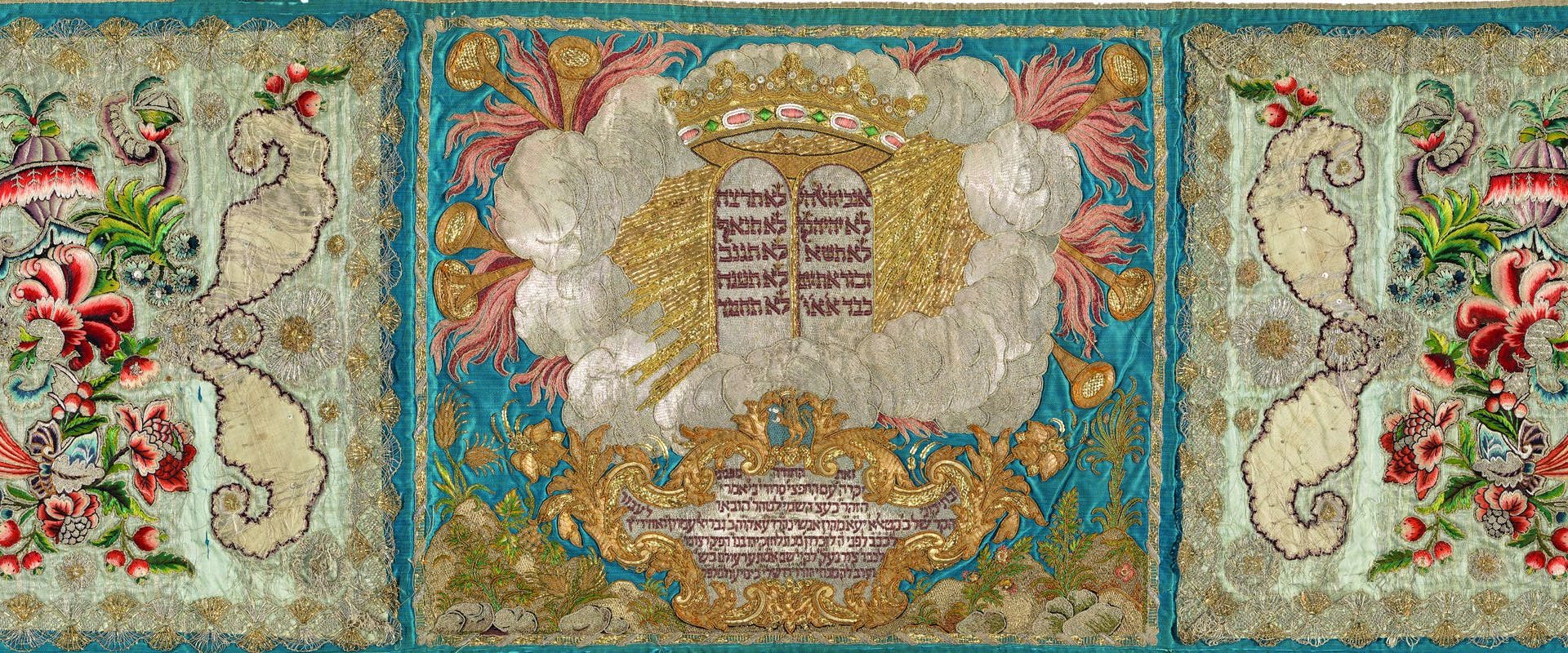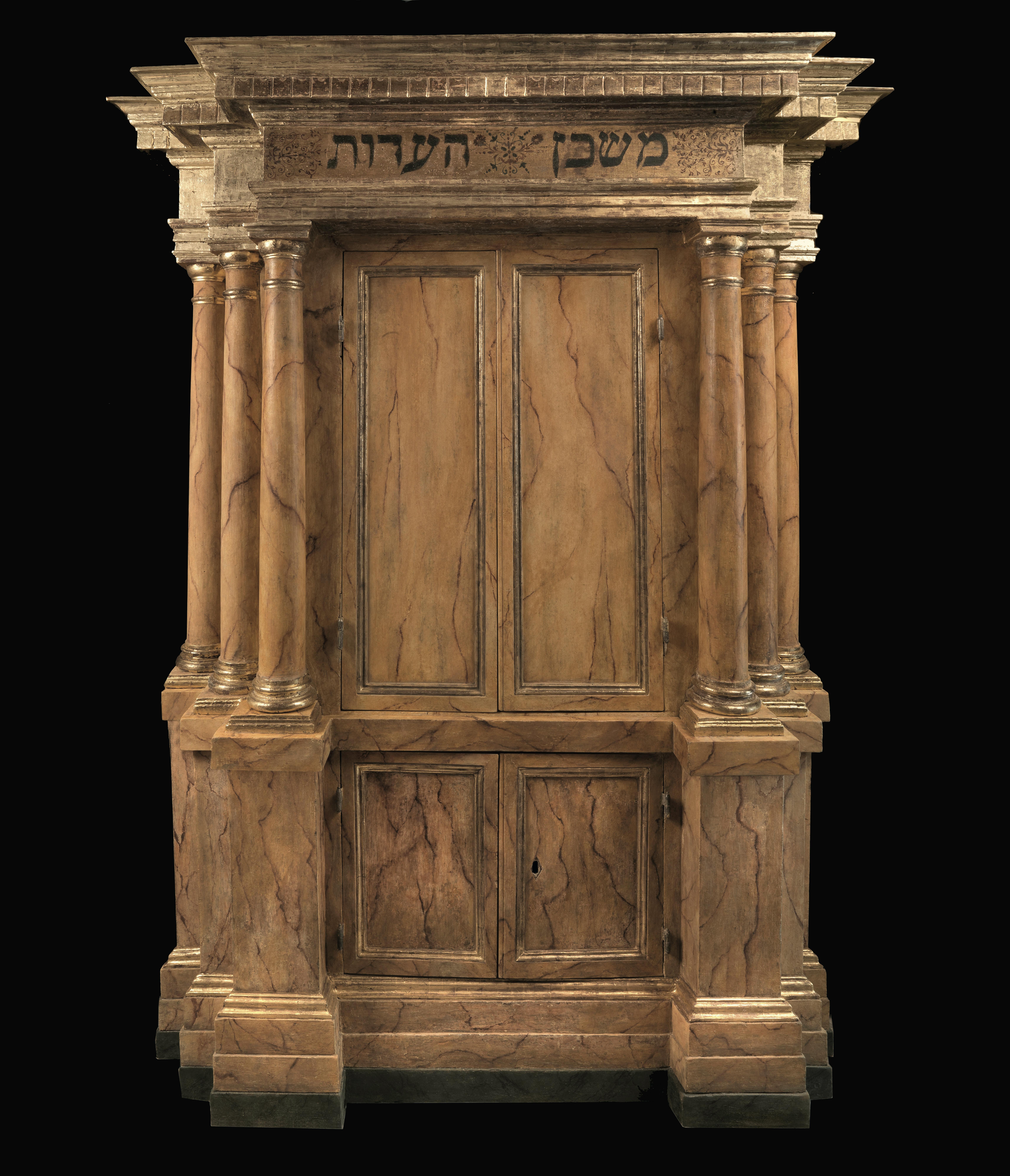The Colours of Judaism in Italy
The exhibition explores the history of Italy's Jewish community from a novel and highly colourful angle, the art of textiles
Some 140 exhibits, including tapestries, textiles, decorative fabrics, lace work, clothing, paintings and other items of daily or religious use, present the history of Italy's Jewish community for the first time through one of the lesser-known arts, the art of weaving, which has always played a crucial role in the decoration of houses, palazzi and places of worship in the Jewish world, revealing Judaism's care for its traditions but also its joyful, colourful side that is so rich in symbols. The exhibition also shines the spotlight on the Jewish people's intercultural and international character, thanks primarily to the outstanding variety of the textiles' motifs, where colour often predominates in a dazzling way.
The exhibition takes us from the ancient world right up to the fashions of the 20th century and to modern textile manufacturing, addressing such key themes as the role of writing as a decorative motif, the use of textiles in the synagogue, embroidery as a secret labour, and the role of women.
Playing a leading role as long ago as in the days of the Bible, fabrics have had the ability to express the Jewish people's soul also in more recent times through absolute masterpieces, often from the Near and Far East with which Italy's Jews came into contact through family or trading ties. See, for instance, the spectacular Ottoman curtain (or parochet) woven in the first quarter of the 16th century, on loan from the Museo della Padova Ebraica.
Italy's various Jewish communities, in osmosis with the society around them with which they interacted, ended up taking on board local artistic expressions and styles. Textiles from Livorno, Pisa, Genoa and Venice, for example, clearly reveal the influence of the Near East – a very different matter from what we see in the textiles of Rome, Florence or Turin, which tend to reflect a certain proximity with the developing tastes of Italy's ruling classes.
Visitors touring the exhibition will be able to admire several extremely rare pieces from foreign museums and collections, ideally leading them on a journey of exploration through the calendar of Jewish festivities. These pieces include embroidered fragments from the Museum of Fine Arts in Cleveland and two curtains from the Jewish Museum in New York and the Victoria and Albert Museum in London which, together with those from Florence, form a triptych of furnishing fabrics similar in both their technique and their symbology, on display here together for the very first time.
An extraordinary, unique piece is the late 15th century niello casket from the Israel Museum in Jerusalem, which kept a tally of the laundry being used by family members, almost like a kind of early computer for the lady of the house's use.
Second-hand garments, especially women's clothing, often provided the precious fabrics used to make furnishings and vestments for the synagogue, and indeed in several cases one can even detect the lines of the gowns and work out their original use. In Fra' Galgario's Portrait of Count Giovanni Battista Vailetti, dated 1720 (an exceptional loan from the Gallerie dell’Accademia in Venice), the sitter wears a splendid morning coat in precious brocade, and in Sebastiano Ceccarini's Allegory of the Five Senses (1745), for example, the girl's gown is made of the same fabric as the Ambron mappah made in Rome in 1791–2.
The embroidery is simply breathtaking, some of it with "speaking coats-of-arms" (because Jews were prohibited from receiving noble titles) in sumptuous Baroque frames. Fully-fledged "needlework paintings" that glittered in the flickering light of candles and torches in a triumph of coloured silks and of gold and silver thread, these pieces were produced by the skilled hands of women who, though shut away inside the home, displayed astonishing creativity and vast knowledge.
The oldest fabrics on display in the exhibition, datable to the 15th century, include a curtain for the holy ark from the Museo Ebraico di Roma, another from the Synagogue in Pisa and a textile panel from the ‘Badia Fiorentina hanging’ which originally adorned the walls of the church on solemn feast days. All these fabrics are in tooled velvet interwoven with gold thread in the "griccia" motif, a pomegranate on a sinuous stem, which may well be the textile design that best symbolises the Renaissance in Tuscany.
A surprising discovery is the Aron Ha Qodesh, a holy ark from the oldest synagoge in Pisa. The painted decoration and gilding on the ark, which has now been identified as a 16th century original, have resurfaced from beneath the countless coats of white paint that had defaced it.
The exhibition's thematic sections bring us up to our own day via 19th century textile collecting, the greatest exponent of which was Giulio Franchetti who donated his collection to the Museo del Bargello, but also via the entrepreneurial spirit (in particular that of the Forti-Bemporad family in Prato) and the creativity of a number of celebrated fashion stylists.
The exhibition closes with an absolute masterpiece, a piece of lace some eight metres long designed by Lele Luzzati for the ocean liner Oceanic, in the shape of a collage of ancient and modern pieces reproducing The Splendour and Images of Italy's Commedia dell'Arte in an unusual medium combining traditional manual skill with unbelievable expressionist strength.
As the Director of Uffizi Galleries, Eike Schmidt, explained: “it is a sweeping exhibition exploring a theme never yet addressed before now. Visitors will be stunned by the variety and richness of the items on display, which range from solemn liturgical vestments and fabrics to diplomatic gifts, garments, embroidery, portraits, ready-to-wear and much more. These fabrics tell the brimming, riveting story of the Jewish people in Italy”.
Alessandra Di Castro, President of the Foundation for the Museo Ebraico di Roma, remarked: “The Jewish production of textiles, as indeed of silverware and of other forms of decorative art, is closely bound to the broader history of Italian art. It has been influenced down the ages by the changing tastes of Italy's artistic civilisation and has itself caused and influenced those changes. That is why this exhibition concerns everyone and shines the spotlight on a common heritage – an unbelievable heritage in terms of both its quality and its sheer quantity – which needs to be enhanced and protected, but above all, its story needs to be told so that people can become acquainted with it in all its rich variety”.
Curated by Dora Liscia Bemporad and Olga Melasecchi, catalogue published by Giunti.

